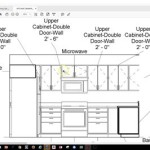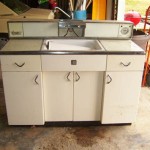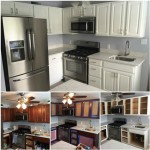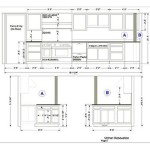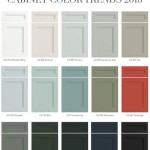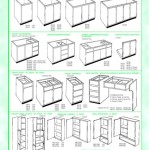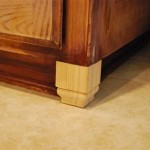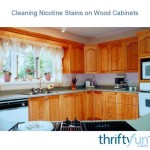Stacked Upper Kitchen Cabinets: A Comprehensive Guide
Stacked upper kitchen cabinets, also known as double-stacked cabinets or cabinet stacking, are a design trend gaining significant popularity in modern kitchen design. This architectural element involves installing two tiers of cabinets, one above the other, reaching closer to the ceiling than traditional single-tier upper cabinets. The goal is often to maximize vertical storage space, create a visually impressive aesthetic, and achieve a more finished, custom look within the kitchen.
The concept of stacked upper cabinets extends beyond simply adding more storage. It represents a deliberate design choice that can significantly impact the overall perception of the kitchen's size, sophistication, and functionality. Whether used in a contemporary, traditional, or transitional kitchen, stacked uppers offer versatility and the potential for personalization through varying door styles, finishes, and hardware.
This article will delve into the numerous aspects relating to stacked upper kitchen cabinets. Key considerations for planning, design, installation, and cost will be explored to provide a comprehensive understanding of this increasingly sought-after kitchen feature.
Maximizing Storage and Functionality
One of the primary drivers behind the popularity of stacked upper cabinets is the enhanced storage capacity they provide. In kitchens where space is at a premium, utilizing vertical space becomes crucial. Standard upper cabinets often leave a significant gap between the cabinet top and the ceiling, an area frequently underutilized. Stacked cabinets effectively eliminate this dead space, offering additional shelves for storing less frequently used items, seasonal decorations, or bulk purchases.
The functionality of stacked upper cabinets can be further optimized through strategic planning. The lower tier, being more easily accessible, is generally reserved for everyday items such as dishes, glassware, and commonly used pantry staples. The upper tier, which might require the use of a step stool for access, is ideal for items used less often, such as holiday serving platters, specialty appliances, or long-term pantry storage. Considering the access frequency of different items when organizing the shelves promotes efficient workflow within the kitchen.
Furthermore, the design of the upper cabinets can incorporate features that enhance functionality. Glass-front doors, for example, allow users to visually identify stored items without needing to open the cabinet. Interior lighting can also be added to illuminate the contents of the upper cabinets, making it easier to locate specific items, especially in dimly lit kitchens. Pull-out shelves or organizers can be included in the upper cabinets to make deeper spaces more accessible and prevent items from getting lost in the back.
The increased storage afforded by stacked cabinets also provides an opportunity to declutter countertops, leading to a cleaner and more organized kitchen environment. Small appliances, spice racks, and other items perpetually taking up counter space can be relocated to the upper cabinets, freeing up valuable workspace and improving the overall aesthetic appeal of the kitchen.
Achieving Aesthetic Enhancement
Beyond the functional benefits, stacked upper cabinets offer a significant aesthetic advantage. They contribute to a more polished and upscale kitchen design, creating a sense of height and visual drama. By extending the cabinets closer to the ceiling, they minimize the appearance of empty space, making the kitchen feel larger and more complete. This design element is particularly effective in kitchens with high ceilings, where a single row of upper cabinets can look disproportionately small.
The visual impact of stacked upper cabinets can be tailored to suit various design styles. For traditional kitchens, choosing cabinet doors with raised panels, intricate moldings, and decorative hardware can enhance the classic aesthetic. In contrast, contemporary kitchens often benefit from sleek, flat-panel doors, minimalist hardware, and a streamlined design. The use of contrasting colors or finishes between the upper and lower tiers can also create visual interest and add depth to the design.
The choice of door styles for the upper cabinets provides another avenue for aesthetic customization. Glass-front doors, as previously mentioned, not only offer functional benefits but also contribute to the overall visual appeal of the kitchen. They can be used to showcase decorative items, such as china, glassware, or collectibles, adding a personal touch to the design. Alternatively, solid doors can be used to conceal less visually appealing items, creating a cleaner and more organized look.
The integration of lighting is another key consideration for enhancing the aesthetic appeal of stacked upper cabinets. Under-cabinet lighting can be installed to illuminate the countertop space, providing task lighting for food preparation. Interior cabinet lighting can highlight the contents of the upper cabinets, adding a touch of elegance and sophistication. The placement and type of lighting should be carefully considered to create the desired ambiance and complement the overall design of the kitchen.
Planning and Installation Considerations
The successful implementation of stacked upper cabinets hinges on thorough planning and careful execution. Before embarking on the installation process, it is essential to assess the existing kitchen layout, ceiling height, and structural integrity of the walls. Precise measurements are crucial for ensuring that the cabinets fit properly and are installed securely.
One of the primary considerations is ceiling height. Stacked upper cabinets are generally best suited for kitchens with ceilings at least eight feet tall. In kitchens with lower ceilings, the added height of stacked cabinets may create a cramped or overwhelming feeling. Careful consideration should be given to the proportions of the cabinets and the overall scale of the kitchen.
The structural integrity of the walls is another critical factor. Upper cabinets, especially when filled with items, can be quite heavy. It is essential to ensure that the walls are strong enough to support the weight of the cabinets. Reinforcements may be necessary if the walls are not structurally sound. Consulting with a qualified contractor or structural engineer is recommended to assess the load-bearing capacity of the walls and determine if any modifications are required.
The installation process itself can be complex, requiring specialized tools and skills. It is generally recommended to hire a professional cabinet installer to ensure that the cabinets are installed correctly and safely. Proper alignment, leveling, and secure fastening are essential for preventing damage to the cabinets and ensuring their long-term stability. The installer should also be knowledgeable about local building codes and regulations to ensure compliance. Furthermore, the installer can advise on necessary modifications the existing electrical or plumbing.
The cost of stacked upper cabinets can vary depending on several factors, including the type of materials used, the complexity of the design, and the cost of installation. Custom cabinets, typically fabricated to exact specifications, are generally more expensive than stock cabinets. The choice of door styles, finishes, and hardware can also impact the overall cost. Obtaining multiple quotes from different cabinet manufacturers and installers can help to ensure that the project stays within budget.
Pre-planning should also include details such as whether the upper cabinets will completely meet the ceiling or whether a decorative molding will be added between the top of the cabinets and the ceiling. If the latter, the height must be sufficient to accommodate the molding.
Consideration must also be given to access. While maximizing storage is a primary benefit, inaccessible storage is essentially uselesss. Therefore, carefully consider the placement of items in the upper tier based on frequency of use.
Lighting Integration and Impact
Lighting plays a crucial role in both the functionality and aesthetics of a kitchen featuring stacked upper cabinets. Thoughtfully integrated lighting can enhance the visual appeal of the cabinets, improve visibility, and create a more inviting atmosphere. There are several types of lighting that can be incorporated into a stacked upper cabinet design, each serving a distinct purpose.
Under-cabinet lighting, typically installed on the underside of the upper cabinets, provides direct illumination of the countertop workspace. This type of lighting is essential for tasks such as food preparation, chopping, and reading recipes. LED strip lights are a popular choice for under-cabinet lighting due to their energy efficiency, long lifespan, and ability to provide a bright, even light. The placement of the lights should be carefully considered to minimize shadows and ensure optimal illumination of the work surface.
Interior cabinet lighting can be installed inside the upper cabinets to illuminate the contents of the shelves. This type of lighting is particularly useful for glass-front cabinets, allowing users to easily see and access items stored inside. LED puck lights or strip lights are commonly used for interior cabinet lighting. Some cabinets even come with integrated lighting systems that are activated when the door is opened. This feature can add a touch of luxury and convenience to the kitchen.
Ambient lighting, such as recessed ceiling lights or pendant lights, can also contribute to the overall illumination of the kitchen. The placement of ambient lighting should be carefully coordinated with the stacked upper cabinets to ensure that the space is evenly lit and that there are no dark corners. Dimmable lighting controls can be used to adjust the brightness of the lights to create the desired mood and ambiance.
The choice of light color temperature can also impact the overall feel of the kitchen. Warm white light (2700-3000K) creates a cozy and inviting atmosphere, while cool white light (4000-5000K) provides a brighter and more stimulating environment. The choice of light color temperature should be based on the overall design style of the kitchen and the personal preferences of the homeowner.
Beyond functional lighting, decorative lighting can also be incorporated to enhance the aesthetic appeal of the stacked upper cabinets. Accent lighting, such as spotlights or decorative sconces, can be used to highlight specific features of the cabinets, such as decorative hardware or glass-front doors. Backlighting can also be used to create a dramatic effect, illuminating the space behind the cabinets.

Everything You Need To Know About Stacked Cabinets Wc Supply Whole Cabinet

Rule Of Thumb For Stacked Kitchen Cabinets

Kitchen Confidential The Pros And Cons Of Double Stacked Cabinets

Diy Stacked Kitchen Cabinets Frills And Drills

Diy Stacked Kitchen Cabinets Frills And Drills

Double Stacked Upper Cabinets Design Ideas

Diy Stacked Kitchen Cabinets Frills And Drills

4 Pros And Cons Of Double Stacked Kitchen Cabinets

How To Install Stacked Cabinets Over Builder S Grade Queen Bee Of Honey Dos

The Pros And Cons Of Double Stacked Cabinets Alair Homes Saskatoon
Related Posts

